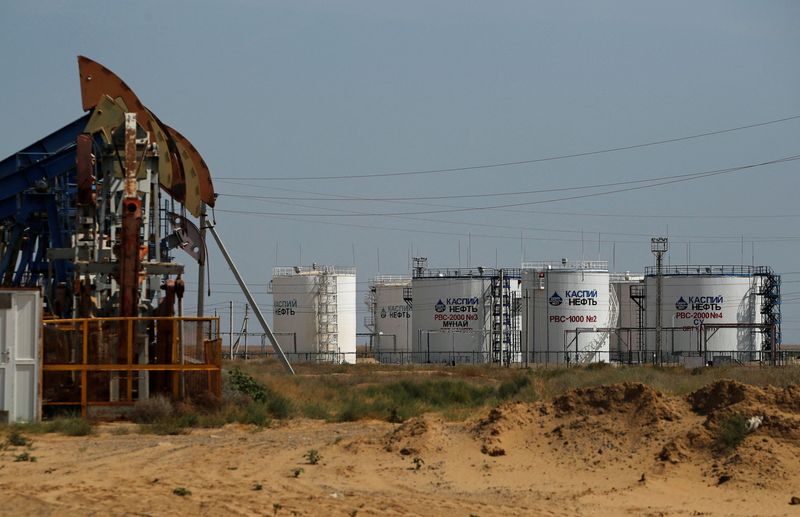Commodities
Oil prices climb 1% on fears over hurricane impact on US output

By Arunima Kumar
(Reuters) -Oil prices rose by more than 1% on Thursday to extend a rebound spurred by concern over Hurricane Francine’s impact on U.S. output, though a gloomy demand outlook capped gains.
Brent crude futures for November rose 94 cents, or 1.3%, to $71.55 a barrel by 1205 GMT. futures for October were up $1, or 1.5%, at $68.31.
A day earlier both contracts had gained more than 2% as offshore platforms in the U.S. Gulf of Mexico were shut and coastal refinery operations were disrupted by Hurricane Francine’s landfall in southern Louisiana.
“Hurricane Francine has likely disrupted about 1.5 million barrels of U.S. oil production, which we estimate will reduce September production in the Gulf of Mexico by around 50,000 barrels per day (bpd),” UBS analysts said.
They added that they expect to move back up above $80/barrel over the coming months.
Nearly 39% of oil and almost half of production in the Gulf of Mexico was offline on Wednesday, the offshore regulator said. A total of 171 production platforms and three rigs had been evacuated.
“The region accounts for about 15% of U.S. oil production, with any disruptions in production likely to tighten supplies in the near term,” said Priyanka Sachdeva, senior market analyst at Singapore-based brokerage Phillip Nova.
But with the storm set to dissipate after landfall, oil market attention began to turn to lower demand.
On Thursday the International Energy Agency (IEA) cut its 2024 oil demand growth forecast by 70,000 bpd, or about 7.2%, to 900,000 bpd, citing muted Chinese demand.
U.S. oil stockpiles rose across the board last week as crude imports grew and exports dipped, the Energy Information Administration (EIA) said on Wednesday.
However, the medium-term trend remains bearish for WTI crude, supported by weak demand from China and “growth scare concerns” in the U.S., said Kelvin Wong, senior market analyst at OANDA.
Earlier in the week, the Organization of the Petroleum Exporting Countries (OPEC) cut its forecast for global oil demand growth this year and trimmed its expectation for 2025, its second consecutive downward revision.

Both oil benchmarks tanked on Tuesday after the downward revision.
Traders are also awaiting data – a reading of producer prices and the weekly jobless claims report are both due at 1230 GMT.
Commodities
Oil prices rise; U.S. crude inventories plunge, Russia-Ukraine truce eyed
Commodities
India’s Reliance to stop buying Venezuelan oil over US tariffs, sources say
Commodities
Oil prices climb on Venezuela supply worries

 Forex3 years ago
Forex3 years agoForex Today: the dollar is gaining strength amid gloomy sentiment at the start of the Fed’s week

 Forex3 years ago
Forex3 years agoUnbiased review of Pocket Option broker

 Forex3 years ago
Forex3 years agoDollar to pound sterling exchange rate today: Pound plummeted to its lowest since 1985

 Forex3 years ago
Forex3 years agoHow is the Australian dollar doing today?

 Cryptocurrency3 years ago
Cryptocurrency3 years agoWhat happened in the crypto market – current events today

 World3 years ago
World3 years agoWhy are modern video games an art form?

 Commodities3 years ago
Commodities3 years agoCopper continues to fall in price on expectations of lower demand in China

 Economy3 years ago
Economy3 years agoCrude oil tankers double in price due to EU anti-Russian sanctions

























